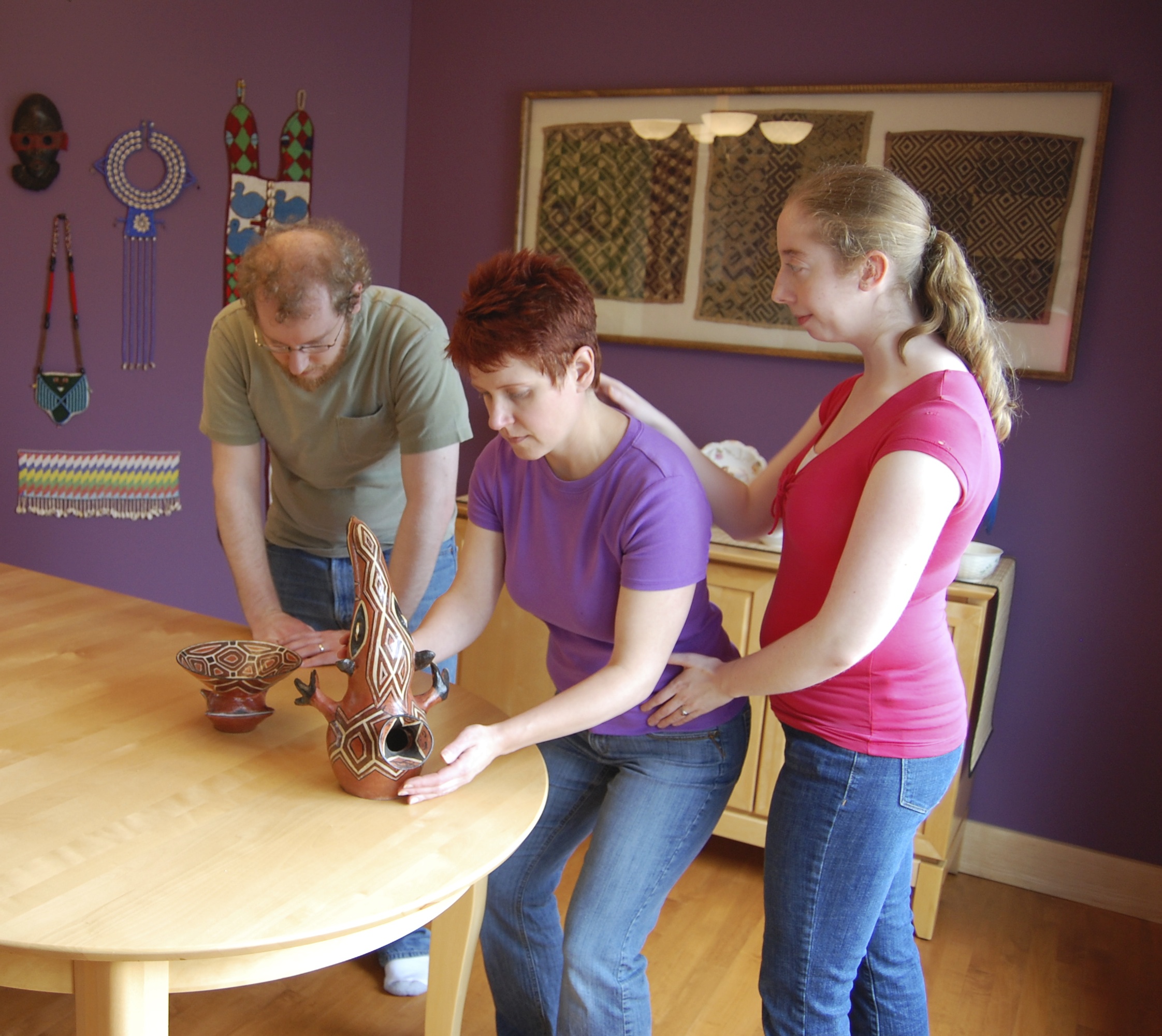Concept Spotlight: Positions of Mechanical Advantage
It’s time for another edition of “Alexander uses big words to explain simple concepts”! Today’s simple concept explained with big words is the ‘position of mechanical advantage,’ also known as ‘monkey’!
In simple terms, a ‘position of mechanical advantage’ is a position from which it is easy to move. The position itself gives you an advantage due to the specific mechanics of the relationship of parts of the self. While the term ‘position of mechanical advantage’ is usually used to refer to the specific position that most teachers now call ‘monkey,’ the phrase can really be applied to any position that satisfies that criteria. Most of what AT teachers do during application work is about finding positions of mechanical advantage for completing specific movements or tasks. Whether that’s adjusting the height of your computer monitor or your chair at a desk, or finding a safe and efficient way to carry your two-year-old on your hip for hours, or helping you reach that high shelf at work without straining your back, it’s all about finding relationships of parts that make it easy to complete the movements required without excess tension.
As for ‘monkey,’ that’s usually what we mean by this phrase. This is ‘monkey’:
 As you can see, the torso is inclined forward from the hips a bit while the head directs forward and up to keep the length, and the knees are releasing forward and away from each other. Though the knees might look ‘bent,’ I’d hesitate to use that word since the direction in monkey is emphatically NOT down into the knees, but up and out of the hips. Monkey can be performed anywhere from very deep, where it looks almost like a squat, to so shallow that it’s barely noticeable visually. My suggestion for people who need to stand for long periods of time is usually to think about standing in a super-shallow monkey, something that will be basically invisible to the onlooker, but will keep your knees free and torso engaged a bit.
As you can see, the torso is inclined forward from the hips a bit while the head directs forward and up to keep the length, and the knees are releasing forward and away from each other. Though the knees might look ‘bent,’ I’d hesitate to use that word since the direction in monkey is emphatically NOT down into the knees, but up and out of the hips. Monkey can be performed anywhere from very deep, where it looks almost like a squat, to so shallow that it’s barely noticeable visually. My suggestion for people who need to stand for long periods of time is usually to think about standing in a super-shallow monkey, something that will be basically invisible to the onlooker, but will keep your knees free and torso engaged a bit.
Keeping the knees free like this is important, as it allows for a light, springy feel to the legs, so that rapid changes of direction and movement can be completed easily. When the knees are completely straight, there’s a slight rotation that happens in the knees themselves that we often refer to as ‘locking’ the knees. If a joint is locked, it’s harder to react by moving it since you first have to take the time to unlock it. If someone gave you a quick shove and your knees were locked, you’d likely fall over. In monkey, you’d likely just sway or slide away from them without losing your balance fully. It’s a position of mechanical advantage.
Here are some additional examples:

In the first application, Ellen works with Christa on her martial arts technique, using a modified monkey to help her prepare to draw the sword.

In the second application, Ellen once again puts Christa into a modified monkey, this time to help her carefully pick up an ancient artifact.
One important thing to mention here: a position of mechanical advantage is one that it’s easy to move from – remember that moving from it is the important part. Any position will become stagnant and unhelpful if you stay in it too long, even monkey. Like everything else we learn in AT, monkey is a tool for your toolbox; you can use it to help re-organize and re-invigorate your use, but at the end of the day, you’ve got to move from it for it to be useful. Hang out in monkey too long and it’ll quickly become just as tiring and stressful as anything else. Once you’ve got it, go!
Forward and Up! is a Pittsburgh-based private practice offering quality instruction in the Alexander Technique in a positive and supportive environment.


